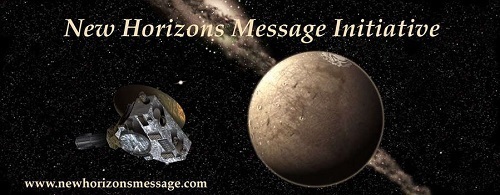Paul Gilster's Blog, page 217
September 27, 2013
100YSS: Building Tomorrow’s Instruments
The timing of the announcement that Voyager 1 has, for some time now, been an interstellar spacecraft came just before the 100 Year Starship Symposium and was certainly in everyone’s thoughts during the event. Jeffrey Nosanov (Jet Propulsion Laboratory) reminded a Saturday morning session led by Jill Tarter that when the Voyager program was conceived, the notion of going interstellar was the furthest thing from the planners’ minds. Voyager’s adventures beyond the heliopause are what Nosanov now calls ‘almost a completely accidental mission.’
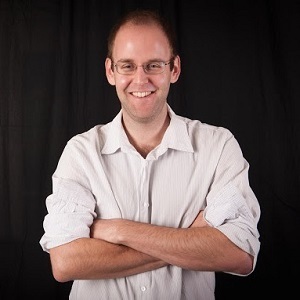
How to follow up the Voyager success? For one thing, we already have New Horizons on its way to Pluto/Charon, with flyby in 2015, and I’ve already discussed the New Horizons Message Initiative, which would upload the sights and perhaps sounds of Earth to a small portion of the spacecraft’s memory after its encounters are done (see New Horizons: Surprise in Houston for more). But Nosanov asked Voyager project scientist Ed Stone, himself all but legendary in his association with the spacecraft, what he would like to see happen next. Stone said he’d like to see ten or a dozen spacecraft sent out in different directions to the same distance.
Image: JPL’s Jeffrey Nosanov, whose work now includes a study of next-step missions beyond Voyager.
Nosanov’s recently accepted proposal to NASA’s Innovative Advanced Concepts (NIAC) Program will examine just that scenario. What he plans to do is to design a spacecraft architecture that will probe what the project description calls ‘ the unique regions of the Heliopause, known as the nose, sides, tail, north and south.’ Flybys of the outer planets and Kuiper Belt objects as well as studies of the heliopause itself are what Nosanov has in mind, but he goes still further, looking toward reaching the Sun’s gravitational lens at 550 AU and beyond to study imaging of the center of the galaxy and other targets at various wavelengths.
State of the Universe
Speaking of working at various wavelengths, the morning “State of the Universe” session began with project scientist Adrian Tiplady discussing South Africa’s role in the Square Kilometer Array, itself a multi-national collaborative project whose 3000 small dishes will carry ten to one hundred times the traffic of the global Internet at any one time. The MeerKAT installation is a precursor for the full array, one whose 64 dishes will make it the largest radio telescope in the southern hemisphere until the Square Kilometer Array is completed some time in 2024. Extending across a number of African nations and into Australia, SKA will be fifty times more sensitive than any other radio instrument, a huge challenge in engineering as well as collaboration.
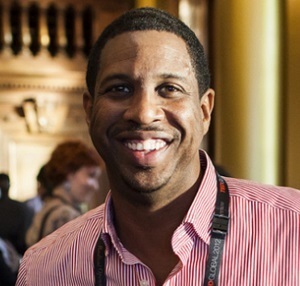
The State of the Universe panel was a lively session, held in the Hyatt’s ballroom and sparked by an enthusiastic Hakeem Oluseyi (Florida Institute of Technology), who offered an overview on our attempt to find dark matter and a whirlwind tour of the early universe following the Big Bang. Oluseyi sees the universe as a place that selects for life-forms that populate the cosmos because planetary existence is sharply limited by extinction events and resource depletion. “Intelligence is needed to move into space,” he added, “but the window of opportunity is finite. Single cell life-forms survive out of robustness, but complex beings need to exploit resources to move into space. Every life form on every planet is in a space race.”
Image: Florida Institute of Technology’s Hakeem Oluseyi, whose rapid-fire tour of the early universe challenged the skills of even this very fast typist attempting to take notes.
I’m skipping a lot of good material to compress this, but I do want to mention that the discussion of exoplanets by David Black (Lunar and Planetary Institute) and Ariel Anbar (Arizona State) brought the crowd up to speed on Kepler — now without fully functioning gyros but sporting a huge list of exoplanet candidates — and methods for studying biosignatures in the atmospheres of distant worlds. Jeff Kuhn’s discussion of the Colossus telescope was a fitting cap to the panel. Kuhn (Institute for Astronomy Maui) described an Earth-based instrument that could perform a census of nearby planets looking for unusual thermodynamic signals. Explaining earlier searches for Dyson spheres, Kuhn went on to discuss how civilizations use power, noting that we use half of one-tenth of one percent of the total energy our planet absorbs from the Sun. Power consumption increases, of course, as civilizations become more advanced.
The inevitable result: The thermal signals Colossus is being designed to look for. The Colossus Consortium, a private organization funded by a wealthy individual, is looking for warm exoplanets that display the heat signature of a functioning civilization. Kuhn’s slide showing Paris in the infrared, a nighttime shot taken by a satellite, drove home the point that the thermal signal we produce is significant, measurable and much larger than what we produce in light. The intention of the Colossus builders is to examine stars within 60 light years for such markers, which would be usefully free of our sociological speculations about what such a civilization might do.
Breakthrough Telescope Technologies
It’s a fascinating concept, and to see more about it, read SETI’s Colossus in these pages, or visit the Colossus site. What I like about it is that it makes no assumptions about why or how an extraterrestrial society might choose to communicate, but depends solely upon its activities on its own world. Joe Ritter, a colleague of Kuhn on Maui, went on to lead a track called “Destinations: Hidden Objects” later that day that delved into the difficulties in exoplanet detection and viewing. Ritter ran through Kepler’s woes and discussed Hubble, the James Webb Space Telescope, and the lamented Space Interferometry Mission that may live on in missions like Darwin.
And with a gorgeous slide of the famous “Pillars of Creation” region in the Eagle Nebula, he also made the point that instrument effects limit our ability to see. Check the image below to confirm Ritter’s point: The bright star at center left does not actually have a cross-like shape, reminding us that diffraction spikes can swamp signals of faint objects in even the best of telescopes. Off-axis telescope designs, which he illustrated, can help in reducing diffraction — the Solar-C experimental coronagraphic telescope on Haleakala is an example of how this can be done.
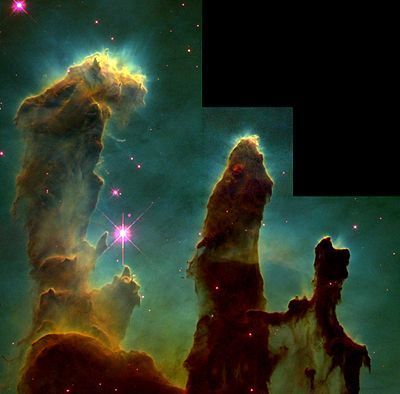
Ritter went on to discuss the uses of polarization, describing forms of spectroscopy that can use polarization to scale away randomly polarized light and leave a more workable signal. With such methods we can hope to separate the light from an exoplanet from the light of its star. The PLANETS telescope (Polarized Light from Atmospheres of Nearby Extraterrestrial Systems) has as its goal to define the atmospheric composition of exoplanets. This one is a 2-meter off-axis telescope now under development at the Institute for Astronomy of the University of Hawaii.
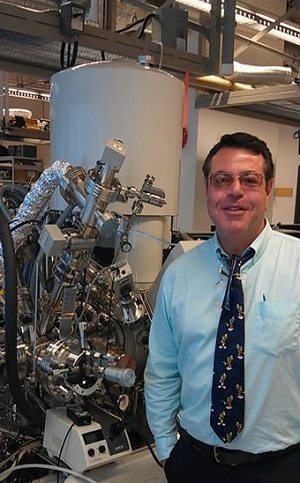
Joe Ritter is a great conversationalist and we enjoyed kicking these and other ideas around after hours at the hotel bar. He’s fascinated with producing thinner apertures and how thin membranes as mirrors can be manipulated by tiny actuators to retain their shape. Polarized light at particular wavelengths can be used on the right materials to create adaptive optics in which the mirror doesn’t actually have to be touched to be re-shaped. Imagine a Hubble-sized mirror (2.4 meters) weighing in at no more than one pound, or a JWST aperture weighing twelve pounds. If we can make such giant apertures, we can use them not only for telescopes but for communications or, dare I say it, as solar sails. This work is so revolutionary in its potential that I’ve asked Joe to write an article about it for Centauri Dreams to explain it in more detail. “Brute force isn’t an elegant way to produce the mirrors we need,” Joe told me. And from what I can see, the work in his lab is both elegant and paradigm-shifting.
Image: Joe Ritter, a name you’ll be seeing much more of on Centauri Dreams in relation to his work on extremely light and thin telescope apertures.
Uses of Science Fiction
Saturday was the symposium’s last full day, so it was perhaps understandable that sessions ran over in the attempt to cram everything in. All of this led to one of the most entertaining episodes of the event, Marc Millis’ talk “From Sci-Fi to Scientific Method: A Case Study with Space Drives.” Marc frequently draws on his work as head of NASA’s Breakthrough Propulsion Physics Project, but this talk is light on equations and long on imagery from science fiction films and how scenarios from such films can inspire creative thought.
An example: We constantly see spaceships in movies where the crew is walking around under what seems to be normal Earth gravity, and as far as we can tell, there is no problem with inertia even when the craft suddenly accelerates. Now if you could actually do that, Millis asks, why wouldn’t your plots take advantage of the fact? An intruder on board wouldn’t need to be handled by security forces. Instead, why not just manipulate the gravity in his location to bounce him off the walls, rendering him unconscious? And drawing on films ranging across the gamut of recent science fiction, Millis extracted scenarios and the questions they raised.
The more serious point is that even a bad science fiction movie can become a spur for thought that encourages new angles into old problems. The key is to promote creativity. Marc had to be amazingly creative himself during his presentation. When I arrived, the late-running panels in the ballroom meant that most people were still there. When Marc was almost at the end of his talk, the room suddenly filled with people, taking up the chairs and sitting on the floor. Without losing a beat, Millis simply went back to the beginning and presented the entire talk a second time. I do a lot of public speaking but I have to say this was something of a tour de force.
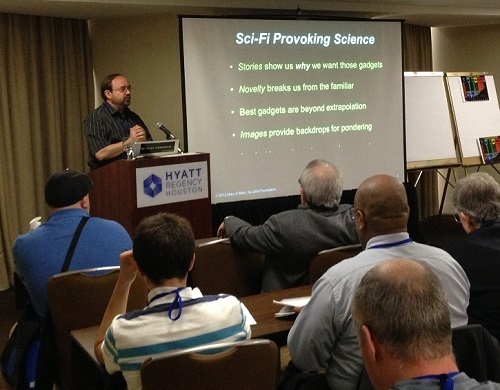
Image: Marc Millis amidst an impromptu reprise of his talk.
I wish I had been able to report on all the talks I attended in these pages but I didn’t have time to run through each. What a year this has been in terms of interstellar conferences. And we still have one to go, a Starship Century event to be held Monday October 21 at the Royal Astronomical Society on Piccadilly in London, with Royal Astronomer Martin Rees as a featured speaker. As I get more information about speakers at this one, I’ll pass it along, and will plan on covering the sessions via live streaming as my travel budget won’t sustain another conference this year.
It used to be that people interested in interstellar flight met in off-schedule gatherings at meetings on other subjects. The explosion of conferences this year is probably unsustainable, but it will be interesting to see what kind of schedule eventually emerges. In any case, it has been a year to remember, one that has put an exclamation point on deep space dreams capped by Voyager, our first interstellar traveler.






September 26, 2013
Time, Distance and Hybrid Engineering
One of the things I admire most about Eric Davis is his seemingly inexhaustible supply of energy. The man is constantly in motion. Davis (Institute for Advanced Studies at Austin) is active in both the Tau Zero Foundation and in Icarus Interstellar, and deeply involved in the propulsion community at numerous conferences, all in addition to his duties at IASA. He has also, for the past two years, served as a track chair at the 100 Year Starship Symposium, a role fraught with its own difficulties as it involves coordinating and reviewing submissions and dealing with presenters at the actual event. In Houston, Davis chaired the track “Factors in Time and Distance Solutions.”
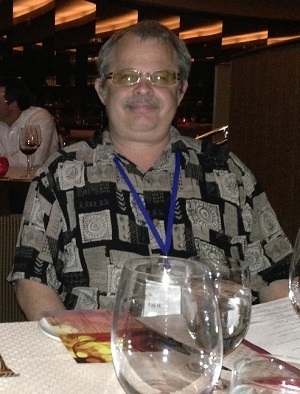
At left is Eric Davis sitting across the table from me at Spindletop, the Hyatt Regency’s rooftop restaurant, which turns out to be quite good despite the fact that it rotates. Calvin Trillin came up with the applicable maxim: “I never eat in a restaurant that’s over one hundred feet off the ground and won’t stand still.” I’ve always found that to be a good rule but the Hyatt’s restaurant is an exception because of its superb seafood. In the photo, my wine glass is absurdly foreshortened — it wasn’t really that big — but the wine selection was first-rate and included the spectacular Cloudy Bay Sauvignon Blanc. Forgive me for the digression, but for ten years I was a restaurant critic for a local newspaper and still have the habit.
Bridging the Interstellar Gap
At the first track session for “Factors in Time and Distance Solutions,” Terry Kammash (University of Michigan) ran through the basics of the rocket equation to show why chemical rockets were inadequate for deep space travel. Kammash is interested in a fusion hybrid reactor whose neutron flux induces fission, a system that could eventually enable interstellar missions. It is based on Gas Dynamic Mirror (GDM) methods that surround a plasma-bearing vacuum chamber with a long, slender, current-bearing coil of wire. The plasma is trapped within magnetic fields that control the instability of the plasma. Here it’s worth mentioning that a Gas Dynamic Mirror propulsion experiment in 1998 produced plasma during a NASA test of the plasma injector system, injecting a gas into the GDM and heating it with microwaves in a method called Electronic Cyclotron Resonance Heating.
Pauli Erik Laine (University of Jyväskylä, Finland) described himself as a computer scientist rather than a rocket scientist, but the two designs he presented were based, like Kammash’s, on hybrid propulsion systems. In Laine’s case, the method is nuclear thermal propulsion, as developed through the NERVA program coupled with nuclear-electric propulsion and a gravitational slingshot maneuver for initial acceleration. Laine also discussed fission fragment rocket technologies in which heavy and light fission fragments, rather than being dissipated as heat through conventional reactor methods, are used directly for thrust. A hybrid fission fragment mission added a solar sail and used multiple staging to achieve five percent of lightspeed.
It’s always great to run into old friends at conferences like these, and I was pleased to see Charles Quarra, who had presented his ideas on what he calls a ‘light bridge to the stars’ in Dallas at Icarus Interstellar’s Starship Congress. Charles is an independent researcher and software developer now based in Panama who has written up the idea of the ‘laser starway’ on Centauri Dreams (see A Light Bridge to Nearby Stars). The work extends earlier concepts by Robert Forward and Geoffrey Landis, solving issues of laser pointing accuracy by using multiple lenses spaced between two stars to deliver the needed high energy density.
My son Miles and I took Charles down the street that evening for a drink at Guadalajara, an excellent Mexican restaurant whose margaritas were impeccable (the grilled salmon tacos were likewise outstanding). While we enjoyed the atmosphere we talked about the starway, a concept that would require continual maintenance, but once built, would become like a highway system for future missions. We go from single missions toward building a long-term infrastructure, the same issue, Charles noted, that Roman engineers faced as they spanned bridges to connect the various Roman territories and provinces. Like the starway, the bridge building was a lengthy task but ultimately it reduced travel time and kept the business of the empire in motion.
The Uses of Curiosity
But back to the “Factors in Time and Distance Solutions” track, where NASA’s Harold “Sonny” White reported on his research on hyperfast travel through the expansion and contraction of spacetime. White ran through the model provided in the 1990s by Miguel Alcubierre and explained the notion that a ring of negative vacuum energy formed around a payload would create a warp bubble within which there are no tidal forces and clock rates remain the same during the journey as they do at mission control. One of the deal-breakers for such thinking has always been the colossal energies needed to optimize the topology of the warp bubble, which until 2011 had remained as high as the equivalent in exotic matter of the mass of Jupiter.
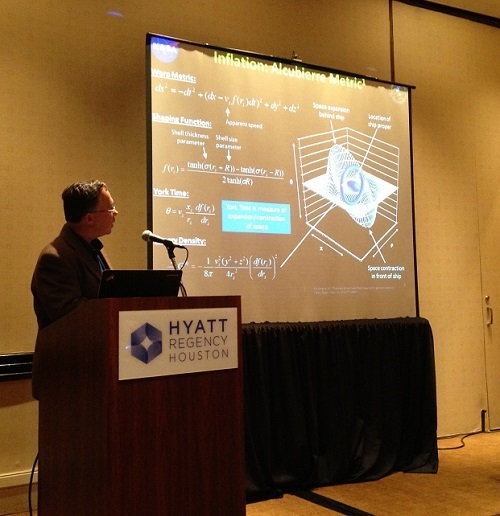
Image: Sonny White discussing his ongoing work.
Basic to the idea is that while objects cannot move faster than the speed of light through spacetime, there is no limitation on the expansion of spacetime itself. The inflation of spacetime is indeed a feature of models of the early universe. A payload enclosed within such a bubble would thus ride a wave induced by expanding spacetime behind the bubble and contracting it in front. White’s work manipulated the shape of the bubble around the spacecraft, changing its shape and thickness, and noting that as these factors were altered, flat spacetime in the center was sacrificed but the amount of strain was reduced. The amount of energy needed is thus decreased by orders of magnitude, down to levels equivalent to the mass of one of the Voyager spacecraft by oscillating the intensity of the bubble and reducing the ‘stiffness’ of spacetime.
White’s hope is that the interferometer he has built at the Eagleworks Optical Laboratory will eventually be able to produce evidence of a tiny instance of this effect. The goal is to detect and measure the effect of this minute warp bubble on the optical path through the interferometer by measuring associated interference fringe shifts. A sister laboratory at South Dakota State University is likewise designed to make such interferometry measurements although it uses different techniques to measure the effect. “We now have separate labs working on this,” White added. “And we do have some results that indicate a potential change in the beam path length. But I want to stress that this is far from conclusive. We simply can’t say anything definitive yet. The plan going forward is to continue to investigate our software approaches, working with larger data samples to reduce vibrational noise.”
Showing photos of the current laboratory setups, White described the interferometer’s operation and then went into the concept of quantum vacuum plasma thrusters, a form of electrical propulsion that in theory could push off against the quantum vacuum. He used the analogy of a submarine propeller pushing off against water. The submarine doesn’t carry a tank of seawater; instead, it is actually immersed in its propellant. The Q-thruster attempts to push off against the virtual particles continually coming into and out of existence in the quantum vacuum.
I’ve been asked repeatedly to write about White’s work but my thought is that other than discussing his presentations at conferences like this one, the best approach would be to have him tell you about his work himself. Sonny is the kindest of men, and he readily agreed to write an article about what he is doing. I’ve asked Eric Davis to do the same thing: Both are involved in matters that go well beyond my expertise and are far better able to explain their work than I can.
White’s work in particular has become highly visible and remains controversial. In Dallas at Starship Congress, we went over to the hotel pool where cheeseburgers were on sale and enjoyed a leisurely meal and beer outside. I can still remember Sonny cringing when I told him about an email I had received saying “Now that Dr. White has solved the warp drive problem…”
“We have so far to go to find out whether this will pan out,” he told me then. “My work on all this came out of curiosity. Sometimes it’s good to pursue things just because you’re curious. It’s worth doing to see if we can learn something and we’ll see where these experiments lead.”
I’ll wrap up coverage of the 100 Year Starship Symposium tomorrow with a look at an excellent science panel moderated by Jill Tarter and a lively talk on the uses of science fiction in raising and probing scientific questions that was presented by Marc Millis. I ran out of time today before I got to Joe Ritter’s track on “Destinations,” so I’ll also be sure to get into that tomorrow. We do, after all, need to know where we’re headed.






September 25, 2013
Starting Up an Interstellar Civilization
Broadening the interstellar community through public engagement is something Centauri Dreams is all about, so I try to keep my eyes on emerging tools that support that effort. On that score, the 100 Year Starship Symposium in Dallas was provocative. John Carter McKnight (Arizona State University) was chair for the track “Becoming An Interstellar Civilization: Governance, Culture & Ethics,” and although I only had the chance to talk to him briefly, I learned about something called MOOCs — Massive Open Online Courses. These interactive teaching forums support readings and video with intense interactions among students and teachers.
Serendipity always works its magic, and the very day I was starting to look into MOOCs, Tau Zero social media wizard Larry Klaes sent me news of a MOOC being offered at the University of Leicester. It’s not interstellar in nature, but Larry knows of my interest in the medieval world and knew I would be interested in a six-week interactive (and free) study of Richard III and his era, taught by the university’s Deirdre O’Sullivan, who specializes in medieval archaeology. For those similarly inclined, England in the Time of Richard III begins on November 25.
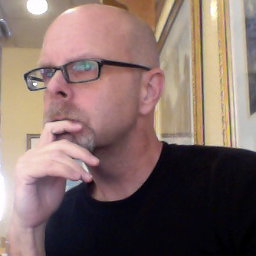
My concern about interactive courses has always been that they can be so easily degraded by spammers or trolls, but evidently the community is learning how to shut down such activities. Dr. McKnight described one course with over 16,000 participants that had successfully brought a number of graphic artists into contact with their fans, fellow artists and students. Obviously, if we can refine MOOCs into serious learning experiences, we can think about using them to reach broad audiences with courses in physics, astronomy and all aspects of interstellar flight.
Image: Social media specialist John Carter McKnight, a master of technologically-mediated spaces ranging from the gaming community to educational venues for spaceflight.
From Blue to Black Sky
Switching between tracks had me constantly changing rooms, but I stayed in McKnight’s track to hear Erika Ilves discuss how to go about starting up an interstellar civilization. Ilves is an innovation strategist and author interested in what she describes as ‘hyper-visionary ventures,’ about as apt a description as I can think of for organizations like the 100 Year Starship. Her multi-media book The Human Project (co-authored with Anna Stillwell) examines existential challenges and evolutionary opportunities for our species, a three-year project that puts forth an agenda leading to what she hopes will become a multi-planetary civilization.
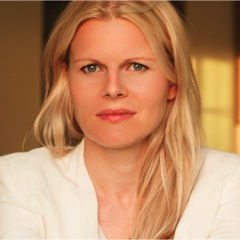
One of the issues Ilves explores is how to accelerate the transition to this kind of civilization, one that ultimately becomes interstellar. On this site I’ve often spoken about the long-range challenges that should take us off-planet, from protecting the Earth from future impacts to investigating astrobiology in ever-widening spheres of exploration. But Ilves argues that engaging the public must also involve solutions to problems closer to home, such as advances in energy production and sustainable ecologies. Her definition of civilization is broad: “A cultural infrastructure designed for continued survival and evolution of Earth-originating minds in the universe.” Our ultimate goals should include seeding life and searching for it elsewhere.
Image: Erika Ilves, whose determinedly optimistic outlook on the human future draws inspiration from David Deutsch’s The Beginning of Infinity.
On the near-term front, technological imperatives include human life extension, a deepened human presence in the Solar System, and a fully built-out global Internet, all of this building the basis for what we need to move outward: Fusion, engineered habitats in deep space and major advances in closed-loop ecologies. Her work examines the various fora for global public initiatives and entrepreneurs that can help lead to this result. Catalyzing the transition involves refocusing human attention out of inward-focused trivialities and into the kind of ventures that advance our civilization, and that means making the turn from ‘blue sky’ to ‘black sky’ thinking.
An Evolutionary Leap
Much of what Ilves said found resonance in Michael Paul Ziolo’s following talk, which focused on the evolutionary ‘long jump’ our species will take as it moves into permanent habitation in space, a jump that Ziolo believes is far greater than that taken by our distant ancestors when they moved from sea to land. Ziolo (University of Liverpool) is as compelling a speaker as I have ever encountered, a tall, rangy man who speaks with palpable enthusiasm and deep engagement with his subject. He sees our challenge as to develop a secure foothold in the Solar System before resource depletion and other constraints make it impossible for us to take this step.
I hadn’t been aware of the Rockwell Corporation’s Integrated Space Plan, which Ziolo displayed on-screen, but it was developed in 1989 to offer a long-term strategy for cooperative research that would lead to a permanent human presence in space (you can download a copy here). Ziolo sees it as a useful forerunner, a prototype that can be reworked through a networked, distributed computing model (think SETI@home), which would become a design tool as we move into a space society. Dr. Ziolo’s sense of urgency is palpable. In the lobby on the last day of the conference, I spoke to him about the imperative to get key technologies into place before what he describes as ‘constraint and error catastrophes’ set us back and make future progress unlikely.
I probably connect as well as I do with Dr. Ziolo because of his own background, which includes extensive work in medieval studies along with an interest in ‘psychohistory’ I can only describe as Asimovian — I was not the first to bring up the name of Hari Seldon from Asimov’s Foundation series, though I don’t recall Ziolo himself using it. In any case, a love of the medieval world rotates around the crisis of civilizational collapse following the loss of the Roman influence and the long era of recovery that follows. Medieval man, fortunately, was blessed with the kind of natural resources that a future society, experiencing the same order of setback, may not have at its disposal, making a return to space that much more unlikely.
Gaming Deep Space
So getting to work while the resources are still available is important. So is reaching the public with the message, and to cycle back to where this essay began, I want to mention Casey Hudson’s presentation at the Saturday lunch session in the ballroom. Hudson is doubtless known to many of you since he is executive producer for a gaming franchise called Mass Effect that a number of readers have told me about. I have no experience with gaming, probably because I spend the day in front of a computer screen and by the time the day ends, the last thing I am ready to do is park myself in front of another screen, whether game or TV. Give me a good book and I am happy, but the last computer game I played was a World War II submarine simulation called GATO that goes all the way back to the mid-1980s and was, I’ll admit, a lot of fun.
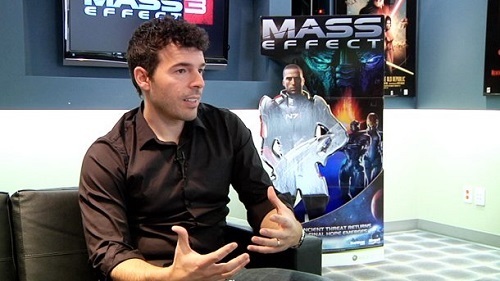
Image: Casey Hudson, whose talk on gaming effectively explored the technology’s potential for taking the interstellar message to the general public. Credit: GameInformer.
Hudson’s talk, illustrated with numerous clips from the Mass Effect games, was revelatory to someone who hasn’t been following the technology. With gaming getting ever more realistic in terms of graphics and interactive dialogue, it’s easy to see why a large population is hooked on Hudson’s product, and also heartening to think that such an interest could lead to motivating people into careers in the space sciences. And as Hudson noted, as we move closer to genuine artificial intelligence, games will become far more realistic, with characters interacting not through previously scripted responses but through original and unpredictable paths. An immersive 3-D environment coupled with such characterization would be a potent learning tool indeed as well as a font of popular entertainment.
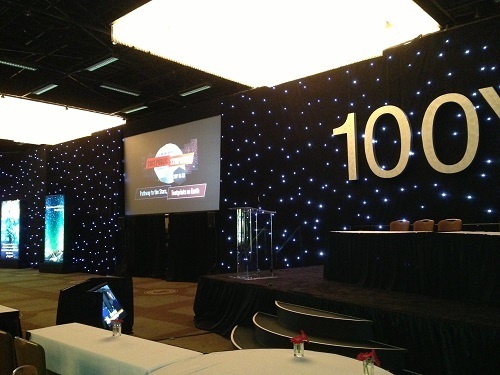
Image: The Hyatt-Regency ballroom, where plenary talks took place, in the early morning Saturday before sessions began.
Tomorrow I want to get into Eric Davis’ track “Factors in Time and Distance Solutions” and Joe Ritter’s track on “Destinations,” along with notes on a variety of pleasant encounters with old friends as the symposium continued. As you would expect, Houston has some excellent Mexican restaurants, and the hotel-top restaurant proved superb, as Eric, Marc Millis and my son Miles and I discovered. More on all this and a wine reminiscence tomorrow.






September 24, 2013
100 Year Starship: Crossing the Disciplines
The 100 Year Starship Symposium forces an interesting conversation simply by virtue of its name. I learned this yet again this morning when I met a neighbor out walking his dog. He knew I had been in Houston and that the subject was space travel, but he assumed we must have been talking about Mars. “No,” I replied, “we’re actually talking about a much more distant target.” His eyes lit up when I described the Houston conference, and in particular when I talked about multi-generational efforts and what achieving — or even just attempting — them could mean.
The odd thing is, I get this reaction often when talking to people about interstellar flight. Sure, you’d expect the audience at the Houston symposium to be onboard with the idea of outcomes beyond their own lifetime, but I’m finding a genuine fascination with the idea among people who otherwise have no connection with space. I frequently lament the extreme short-range nature of modern society, but it heartens me to keep encountering what seems to be a hunger to overcome it. Maybe somewhere deep within all of us, not just a few of us, there is a hard-wired impulse to make a difference over not just the coming year but the coming century.
Let’s hope so, for if that’s the case, making the pitch for long-term thinking is going to bear fruit. The other definitional matter that the 100 Year Starship name brings up is the nature of the project itself. Is it a ship that will take a century to reach its target? Is it a ship that will be built in a hundred years? When my neighbor asked that one, I told him that what really counted here was finding out how to sustain an organizational effort over an entire century. At the end of that period we may be in position to build an interstellar craft, but we can’t know the timing. What we have to master is long-haul effort that gets handed off as needed to our descendants.
Maps and Dreams
I’m swiping the title of Hugh Brody’s wonderful book on traveling the Canadian sub-arctic (a must-read if you’re not familiar with it) to point to how one person’s mapping of distant landscapes leads to another’s fascination with the place and eventual journey there. Starship planning, obviously audacious and open-ended, is about constructing multiple pathways to attack the interstellar question. In her introductory talk, 100 Year Starship leader Mae Jemison emphasized the multidisciplinary nature of the effort, pulling from the ‘hard’ and ‘soft’ sciences as well as the humanities to engage the broadest spectrum of the population:
“We need to create and inspire and maintain an environment where starflight can eventually be achieved,” Jemison added. “We need to foster explosive innovation, technical achievement, and societal advances in economics, governance, behavior, and education, not just in the hard sciences. This won’t happen without engaging people across lines of ethnicity, gender, and geography. No one organization can do it all. It is an audacious, bold venture that won’t be led by naysayers or caution. We are here to squander ourselves, squander ourselves for a purpose.”

Image: Mae Jemison delivering her opening address at the symposium.
In the following talk of the plenary session, Loretta Whitesides, who along with husband George is looking toward the next generation of suborbital flight through Virgin Galactic (George is its CEO), told the crowd that the people who go to the stars won’t be us, but people much like us. The point she was making is that if we do manage to overcome the huge challenge of starflight, we will have managed it only by developing a community that can keep the effort going, transforming its participants in the same way the much-noted ‘overview effect’ has transformed so many space travelers by letting them see their own planet from a unique perspective.
This is a kind of societal evolution that takes place one mind at a time, but we can try to communicate it through public outreach and individual conversation. I’m reminded that Mae Jemison has said her own experience of the overview effect on her flight aboard Endeavour was slightly different than what some astronauts have reported. As she told the Houston audience, she naturally felt the deep connection many have reported with the blue and green Earth, but also a surprisingly strong connection with the cosmos that surrounded it. If it’s true that nobody shows a child the sky, maybe nothing but experience in space will gradually bring enough voices to this effort to reach the kind of cultural tipping point that can think and plan centuries ahead.
Disciplines and Strategies
All of this raises questions of focus: If one thing is clear, it is that no starship will ever be built without the propulsion system to drive it to its destination. And if it is to be a starship with a human crew, no starship will ever fly without our mastery of closed-loop living systems, a subject about which we have much to learn through theory and experiment. But focusing solely on propulsion and life support would ignore the fact that starflight will be transformational in every aspect of life. Thus the relevance of John Carter McKnight’s excellent track that addressed culture, ethics and governance, of Dan Hanson’s track examining how the effort at starship building could enhance life here on Earth and Karl Aspelund’s track on systems design.
The net was broadly thrown, with Jill Tarter’s ‘State of the Universe’ panel ranging from the construction of the Square Kilometer Array to a timely update on the progress of Voyager 1, while the ‘Trending Now’ panel led by Hakeem Oluseyi addressed everything from the Colossus telescope (a particular interest of mine) to Ronke Olabisi’s discussion of growing bones, meat and other organics in the laboratory. The science fiction panel led by Levar Burton placed starflight in the context of culture and asked how we are portraying it in fiction today.

Image: The lobby of the Hyatt Regency in Houston, quiet in this morning shot, but the scene of numerous conversations as the day wore on.
I have notes on all of these events and more, and as I go through them in coming days I’ll report some of them in greater detail. But talking to my neighbor this morning reminded me of the importance of pulling interstellar ideas across many disciplines even if some of these matters can be addressed no more than theoretically. Questions of ethics aboard a starship, for example, may seem irrelevant if we have no engine to fly the starship in the first place, but it’s important to recognize that it will take more than a single century to resolve seemingly intractable problems that, if they divide humans on Earth, could destroy them over the course of a multi-generational star mission. There is also something to be said for energizing the arts by setting high goals that in turn inspire the general public.
Learning how to build science advocacy organizations, something Louis Friedman did brilliantly with the Planetary Society and which he examined in a luncheon talk, will be crucial in sustaining an effort that lasts centuries or more. So we need to be pulling in ideas across the disciplines. I’ll close today by quoting Kathleen Toerpe (Northeast Wisconsin Technical College), who is deeply involved in multidisciplinary activities for space through her work with the Astrosociology Research Institute. I’ll use her own words rather than my more fragmentary notes, lifting them from a recent comment she posted on this site in early September as she prepared to make the trip to Houston:
I’m one of those humanists and social scientists you’re including in this grand mythos of interstellar travel and I thank you for your very warm welcome to the adventure! Some of us are gathering under the umbrella of a newer academic field called “astrosociology” – a multidisciplinary group including sociologists, philosophers, poets, historians, psychologists, artists, etc.- all of us passionately researching, exploring and anticipating the human dimensions of space. We’re uncovering what connects the science of space exploration with the individuals and societies that undertake it and with the broader humanity that it intends to benefit. Our work directly benefits scientists and space research while it creates greater public awareness, knowledge, and hopefully, support for continued exploration. Myths are, by their nature, collaborative narratives. It is in community that they are created, shared and wield their power. Your reflections challenge us all to transcend disciplinary boundaries and collaborate even more profoundly toward our space-faring future.
Conferences are energizing but in some ways frustrating — there is always more to do than anyone can fit in, and multiple tracks kept me hopping from one room to another. I particularly wanted to talk to Dr. Toerpe about what she was doing at the Astrosociology Institute but failed to catch her at the right time (though I’ll try to talk her into writing something about the Institute for Centauri Dreams). Tomorrow I’ll move on in my coverage of the 100 Year Starship Symposium to review some of the discussions both in the track sessions and the panels.






September 23, 2013
New Horizons: Surprise in Houston
There is much to say about the 100 Year Starship Symposium in Houston, and as I have done with prior conferences, I will be drawing on my notes in the coming weeks. But I want to start the Houston coverage with the good news that emerged from the outer Solar System. Some time back, Jon Lomberg came up with the idea of sending a new kind of message into deep space. No, this wasn’t to be a controversial signal beamed at a nearby star, but a message from humanity that would fly aboard one of our spacecraft. New Horizons is already in the outer system on its way to a Pluto/Charon encounter in 2015 and, we hope, a close pass of a Kuiper Belt object after that. But Jon thought we could still use it, Voyager style, to house the sights and sounds of Earth.
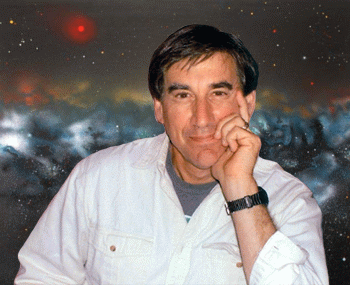
The plan: To re-purpose a chunk of New Horizons’ computer memory, about 120 MB worth, after it has achieved its mission and is continuing out into interstellar space. The 120 MB figure is at this point a rough guess; it represents about 1 percent of the onboard memory. The message from humanity could be assembled by crowd-sourcing the project, getting input from all over the world, and uploading to the spacecraft — Lomberg’s idea is to begin a global contest allowing people to submit their ideas exactly one year before New Horizons flies by Pluto in July of 2015.
Image: Jon Lomberg, who is once again thinking about how to send the sights and sounds of Earth into the cosmos.
I was happy to join the advisory team for the project, for if there’s anyone who can make this happen, it’s Jon. He’s well known as an artist who worked with Carl Sagan on COSMOS and with Frank Drake in designing the cover for the Voyager Interstellar Record. Sending human artifacts on interstellar trajectories is not exactly a common thing to do, but Jon Lomberg is one of the few who has experience at it.
While conversations about the project went into into full gear on the Net earlier this summer, my son Miles went to work on the website that would eventually take the New Horizons Message public. I had assumed when I left for Houston and the 100 Year Starship that I would be focused solely on the various meetings and presentations there, but on Friday night Miles, who had been tuning up the site off and on during the conference, told me that it was ready to go. A quick confirmation with Jon gave the go-ahead to make the project public. Serendipity rules, for who better to make the announcement than the guiding force of SETI, Jill Tarter, who was herself on Jon’s advisory panel, and who even as we were discussing this happened to walk right by?
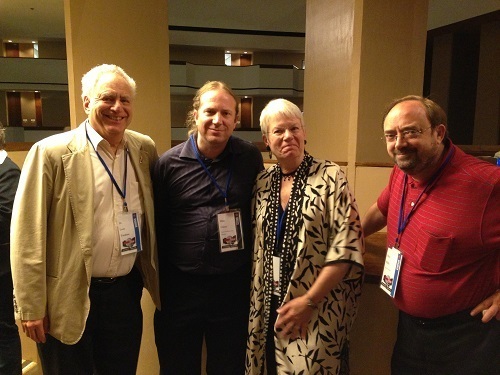
Image: A lively Friday night in Houston. From left, former Planetary Society executive director Louis Friedman, my son Miles, Jill Tarter and TZF founder Marc Millis.
Thus Friday night, which had already been enlivened by a panel with writers Jack McDevitt, Ken Scholes, Karin Lowachee and Mary Doria Russell, became an impromptu planning moment in the crowded foyer outside the ballroom. Jill quickly agreed, Miles forwarded the relevant URL to her computer, and the next morning, after guiding an excellent panel on recent discoveries (about which more later this week), Jill announced the New Horizons Message Initiative and put the site up on the screen. We then asked the formidable LeVar Burton, also intercepted in the foyer, to blast out a tweet to his 1.7 million followers on Twitter, and the initiative was launched.

Image: A quick chat with LeVar Burton. Talk about a fun guy to be around, LeVar is a strong advocate for pushing to the stars, and he signed off on the New Horizons Message without hesitation.
There is much to do. First of all, we need people to go to the site to sign the petition to demonstrate public support that will persuade NASA. The New Horizons Message is a private initiative, and thousands of signatures on the online petition along with endorsements from leaders in astronomy and space sciences will be crucial in making the case to NASA. Also ahead is a fundraising campaign to provide the necessary budget supporting the project, which will pay for developing the techniques for storing and sending the message, holding meetings and conferences to plan and manage the submission process, and formulating and executing the ensuing contest.
The key here is to make this a message from the entire world, searching globally for pictures and other materials that can be voted upon in various categories of content. A self portrait of Earth in the early 21st Century will thus emerge. Unlike the Voyager Golden Record or the Pioneer plaques, however, this is a record that, once uploaded, can be updated over time, as long as the spacecraft is still in communication with the Earth.
No one realistically sees the New Horizons Message as a way to reach ET. This initiative is really about the Earth, and you might think back to the days of Apollo 8 and the stunning Earthrise photograph that so changed our perspective on our own planet. Astronaut Eugene Cernan is famous for saying “We went to explore the Moon, and in fact discovered the Earth.” That sentence was printed on a large poster in the ballroom at the 100 Year Starship Symposium, and along with it a parallel one: “What will we discover from another star?”
It’s a question with profound implications. I’ve said before in these pages that while the problem of the starship is a problem of science, it is also a problem of philosophy, for we have key choices to make as a species on how we want to live. Turning our aspirations toward space offers us the opportunity to reflect on our place in the cosmos and to see what we are doing in a new light. I strongly support the New Horizons Message Initiative and hope you will as well.





September 18, 2013
100 Year Starship Symposium: Arrival
My flight to Houston for the 100 Year Starship Symposium was complicated by aircraft maintenance problems, two switched flights and lost baggage (due in tonight), but I’m now ensconced in the hotel room, from which I just snapped the photo below. I’m 26 stories up and plan to go higher (to the rooftop restaurant) in a little bit.

As I did at Starship Congress, my plan is to focus my attention on taking notes and I won’t try to do any ‘live blogging’ from Houston. When I get back next week, I’ll be writing up the event over a spread of days as I try to get my notes in order. There should be plenty to talk about. Look for me on Twitter as @centauri_dreams if you’re hoping for the occasional tweet. And while I’m here, although I probably won’t be writing much on the site, I’ll take care of comment moderation as often as I can.
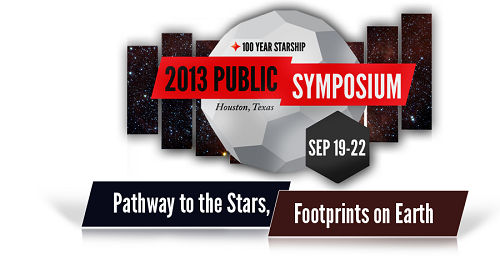





Alien Civilisations: Two Competing Models
by Stephen Ashworth
Being a jazz buff (the 1950s and early 1960s are my era of choice) I naturally note that frequent Centauri Dreams commenter and contributor Stephen Ashworth is a tenor sax man who regularly plays in venues near and around Oxford in the UK. Stephen is also, of course, an insightful writer on matters touching our future in space, not only through his work in the Journal of the British Interplanetary Society but also in his Astronautical Evolution site, which bills itself as studying “The social and political basis for the optimistic, progressive, astronautical society of the present and future.” In this essay, Stephen looks at ways of viewing extraterrestrial intelligence that pose different models for the emergence and spread of life in the universe. NOTE: If you’d like to comment, be aware that today is a travel day for me, so comment moderation will be sporadic, but I’ll catch things up tonight.
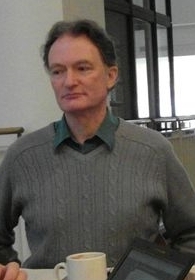
Speculations about the existence of extraterrestrial civilisations analogous to our own fall naturally into two broad camps, which we may for convenience describe as the Steady State model versus the Big Bang model (not to be confused with the cosmological theories of the same names). There is also a Hybrid model which combines the two in true Hegelian fashion (thesis → antithesis → synthesis).
The Steady State model
This is the basis of the famous Drake equation. Drake assumed that for a long time in the past, and for a long time to come, civilisations have been and will continue to be coming into existence, persisting for a while and then vanishing again. The question which interested him was whether the rate of appearance of civilisations capable of interstellar radio communication, and their average longevity, were large enough to make it statistically likely that we would be able to establish contact with a nearby alien society before either they or we became extinct.
Drake regarded civilisations as entirely sedentary or static phenomena. Thus the locations at which they might be found today are always the same as those at which they originally evolved from their biological forebears, and thus closely resemble our planet Earth. They must be found orbiting closely Sun-like stars in circular orbits, thus in the so-called “habitable zone” (planets outside the zone where surface liquid water is possible presumably being habitable only by creatures who were not capable of radio astronomy, or of changing the atmospheric chemistry if there was no atmosphere, and therefore undetectable by astronomical means).
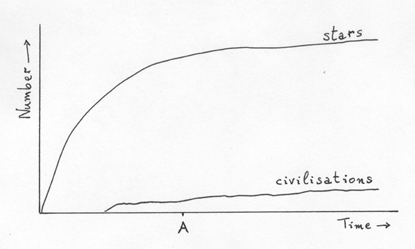
Diagram 1: The Steady State model.
Diagram 1 shows schematically how many civilisations exist at any one time in the Galaxy on the Steady State model. For simplicity it is assumed that each star has either one civilisation, or none. The total number of stars continues to increase slowly as long-lived dwarf stars are added to the population. The number of civilisations rises slightly faster, as longer-lived planets come into play. We are now at point A on the time axis.
The number of stars occupied at any one time is a small fraction of the total (the diagram exaggerates the fraction for clarity). For example, if we share the Galaxy with a million other civilisations at the present time, as optimists may hope, then only 0.00001 of the stars are currently occupied.
All such civilisations arise independently of one another. Collapsed civilisations are not replaced on their planet of origin, but are replaced by other civilisations arising elsewhere. Civilisations are randomly scattered throughout the Galaxy, though Gonzalez, Brownlee and Ward have presented arguments as to why the centre and the outlying galactic regions may be less hospitable than a ring partway out from the centre, where indeed our own Solar System is found.
Civilisations remain completely dependent upon their planet of origin, and the distance between nearest-neighbour planets of that type (perhaps tens of light-years) forbids interstellar settlement.
The Big Bang model
In his book Contact with Alien Civilisations, Michael Michaud reviews the ideas of a number of people who have gone beyond the Drake equation by taking account of the possibility of interstellar colonisation, including Freeman Dyson and Seth Shostak. A similar view has been taken by Ian Crawford, whose article in Scientific American a few years ago discussed the prospect of a dynamic civilisation colonising the entire Galaxy by star-hopping.
Using technologies readily conceivable today (such as nuclear fusion rocket propulsion), a wave of colonies from an expanding civilisation in our Galaxy might take 1,000 years to make each 5 light-year jump (say, travelling for 500 years at 1% of light speed, then taking another 500 years to build up sufficient infrastructure at the target system to make the next jump). Since the Galaxy is about 100,000 light-years across, such a civilisation could spread daughter civilisations to every suitable star and planetary system in the Galaxy within 20 million years.
This, however, is only 0.2% of the age of the Galaxy. The introduction of faster ship speeds makes absolutely no difference: even without warp drive or FTL travel, on a cosmological timescale such a transition from civilisation nowhere to civilisation everywhere is, as Crawford demonstrated, essentially instantaneous.
For a long time, then, the Galaxy is completely devoid of intelligent life. But then one civilisation appears, and spreads throughout the Galaxy in a burst of expansion which we are calling the Big Bang. Thereafter, the locations at which intelligent, technological life is found are almost all colonies, and that life is ubiquitous and permanent.
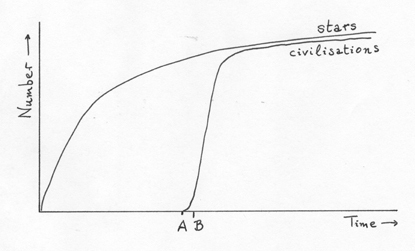
Diagram 2: the Big Bang model.
Diagram 2 shows schematically how many civilisations exist at any one time in the Galaxy on the Big Bang model. If humanity is alone, then we are at point A. But there is a possibility (though a small one) that another civilisation in our Galaxy is, say, only a million years more advanced than we are, and has not yet colonised our part of the Galaxy, in which case we are at point B.
In contrast with the Steady State model, in which stars are occupied randomly, galactic real estate is occupied by colonies in an expanding bubble of space centered on the first civilisation’s planet of origin. Two or more such expanding bubbles may appear, but only if two or more independent civilisations make the breakthrough to space colonisation within about 20 million years of one another – unlikely to occur within any one galaxy. Once the Big Bang is complete the number of stars occupied at any one time is a large fraction of the total, including virtually all main-sequence stars, thus certainly over 0.9 of the total.
Collapsed civilisations are likely to be recolonised from other colonies. In fact, it is possible for every single civilisation to collapse (just as every individual in a population dies), but so long as each civilisation despatches on average more than one colony during its lifetime, the galactic population of civilisations continues to grow.
The original civilisation quickly leaves its planet of origin and adopts a new, space-colony mode of living which allows its offshoots to prosper at all stable stars with orbiting planetary or asteroidal material. This both reduces the distances of interstellar journeys for such a species, and pre-adapts them to living conditions on multi-generational voyages. But all civilisations which evolve after the Big Bang (unless they appear almost simultaneously with it, around point B on the diagram) grow up in an environment dominated by their local colony of the original civilisation.
Their access to space transport would presumably be analogous to the access which a non-developed tribal people on present-day Earth may or may not have to the developed world’s existing motor, rail, shipping and air networks.
The Hybrid model
It is possible to combine these two contrasting models in a single Hybrid model if some emerging technological civilisations get as far as radio astronomy but do not achieve interplanetary and hence interstellar space colonisation.
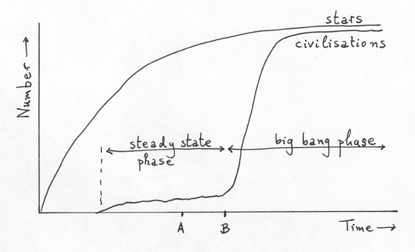
Diagram 3: the Hybrid model.
Diagram 3 shows schematically how many civilisations exist at any one time in the Galaxy on the Hybrid model. If our own civilisation collapses before we establish viable extraterrestrial colonies, then we are at point A; if we do succeed in spreading into space, then we are at point B.
In either case, we are unlikely to find interstellar conversation partners. The level of development at which we have radio astronomy but not space colonisation is not in itself a long-term sustainable level, I would argue, but rather an unstable intermediate stage. Having got as far as radio astronomy, a civilisation will either complete the transition to a space-based civilisation within a few centuries, or completely collapse.
This means that the longevity of a society which tried to stabilise itself at that level would be very small, certainly less than 1000 years; the number of such civilisations present at any one time would be correspondingly small; and the distance over which any messages would have to be exchanged correspondingly large, making successful communication correspondingly unlikely.
(If there were as many as 1000 civilisations at any one time, i.e. N = L in Drake’s equation after all the other factors have roughly cancelled each other out, and 1011 stars in the Galaxy, then for an average interstellar spacing of 5 light-years the average spacing between active civilisations would be 2000 light-years, and the waiting time between sending a question and receiving a reply would be greater than the lifetimes of both the transmitting and receiving civilisations.)
The question of longevity
Given modern fears about nuclear war, peak oil, environmental degradation, social degeneration, technological disaster, climate change and terrorism, spiced with a strong dose of post-colonial guilt and self-loathing, for many people it goes against the grain to think of an industrial civilisation like ours as something which might become a permanent feature of the universe.
What is the lesson from the past evolution of life? Firstly, it must be acknowledged that industrial mankind is as different from our pre-industrial forebears as they were from single-celled Precambrian organisms. Unless one is to maintain that science and technology are somehow unnatural, an aberration from the God-given natural order, then the facts must be acknowledged: a new type of life has emerged with capabilities never before seen. They include the abilities to access other heavenly bodies, and to digest the raw materials found there, neither of which was possible before, except in the marginal case of small numbers of bacteria being randomly exchanged between Earth and Mars.
The pattern from evolution is that each level of biology has given rise to a higher level founded on it: thus prokaryotic cells produced eukaryotic cells produced multicellular life produced technological life – in my own terminology: microbiota → gaiabiota → technobiota.
As each new level of complexity appears, the previous level also persists in symbiosis with it. Furthermore, whereas even bacterial life could not originally have hoped to outlive the death of the Earth (and of Mars) when the Sun approaches its red giant phase, providing that our civilisation fulfils its potential then those less complex organisms will, along with ourselves, continue to live and prosper long after the death of the Sun.
The pattern therefore suggests not only that our technological civilisation will produce some kind of successor at a higher level of complexity, but also that it will not die out once it has become properly established.
Clearly our society is still going through a period of rapid transition, and cannot possibly be regarded as well established yet. It is still experiencing technological and social revolutions, it has not yet reached its final form, and it is still a monoculture. Only once it has technologically matured and begun to diversify at a variety of different Solar System locations, and even more so at a variety of nearby stars, will it be possible to say that civilisation has finally arrived.
Once it has arrived in full flower, the more dynamic branches of it will certainly spread, because regardless of the precise impulse at work that is what life has always done.
Consider the question: where can one find bacteria on Earth? The answer is: nowhere, for an unknown period of time early in Earth’s history. Then there is a Big Bang, a relatively brief explosion of bacterial life, and thereafter the answer is: everywhere.
Our industrial society has yet to experience the equivalent of that Big Bacterial Bang, or of the Cambrian explosion of 550 million years ago when a plethora of new and diverse multicellular forms emerged and went their own ways. That will require our descendants to expand on an interplanetary and ultimately an interstellar scale. But when they do, or when some other civilisation does if we don’t make it, and if life develops in the future as it has in the past, then civilisation will certainly become a ubiquitous and universal feature of the Galaxy for as far into the future as it is possible for us to glimpse.
Answering Fermi’s question
I discussed this at length on the I4IS blog last December.
In brief: the question is why civilisation did not arrive before now, with a starting point elsewhere than on Earth, given that the stelliferous universe with earthlike planets is about three times older than the Solar System.
The reason why people have such a problem with this, and refer to it as a paradox, is because they are wedded to the traditional view since Darwin that life evolved from chemistry on Earth, whether in a “warm little pond”, a piece of damp clay or a hydrothermal vent. If that was the case, then since it evolved within about 300 million years after the end of the late heavy bombardment, it should have done so on many other planets, and billions of years earlier.
But Robert Zubrin makes the point that there is a huge complexity gap between the simplest bacterium known to science and the most complex molecule that can be synthesised by shaking up raw materials in a test-tube. Some proto-bacterial form of life must have preceded life as we know it. But there is no evidence of proto-bacterial life on Earth.
This to my mind is strong evidence that, contrary to the generally accepted view, life does not evolve from non-life on Earth-like planets. The obvious alternative scenario involves it first emerging in a microgravity environment in something like a comet nucleus, and doing so only extremely rarely. This decouples its initial emergence from its subsequent evolution to multicellular forms, allows a period perhaps 100 times longer for that initial jump in complexity to occur, explains why proto-bacteria have never been found on Earth, and furthermore adds in the requirement for a low-probability space transfer before evolution towards multi-cellular forms can begin, pushing the Big Bang of technobiotic life to the right on the diagram.
But not too far to the right. For all that the accepted age of the universe of 13.7 billion years seems to us to be unimaginably ancient, on its own terms the universe is still young. Judged by the lifetimes of its longest-lived stars, the red dwarfs, the universe will continue to contain stars and planets as we know them for a period on the order of tens of trillions of years to come, though the brighter stars will fade long before then. If the universe was a human being, it would still only be about a month old.
Another factor may play a part. Carl Sagan has described how the modern alien encounter/alien abduction mania perpetuates the phenomenon of encounters with angels and demons and with the Virgin Mary in earlier centuries. Could the flood of speculations about alien civilisations – where are they? are they hostile or friendly? – be the modern equivalent of the search for God? Do people still yearn to submit to an Overlord (the name given to the aliens in Arthur C. Clarke’s Childhood’s End), whether beneficent, or intent on our punishment?
Until we find any evidence of alien intelligence, the most parsimonious explanation is that there isn’t any where we have looked, that there is no invisible dragon in my garage (Sagan’s image). So we must look further, before it will be possible to use observations to rule out either of the models described here.
References
Ian Crawford, “Where Are They?”, Scientific American, July 2000, p.28-33.
Guillermo Gonzalez, Donald Brownlee and Peter D. Ward, “Refuges for Life in a Hostile Universe”, Scientific American, October 2001, p.52-59.
Michael A.G. Michaud, Contact with Alien Civilisations (Copernicus, 2007).
Carl Sagan, The Demon-Haunted World: Science as a Candle in the Dark (Headline, 1997); Contact (Century Hutchinson, 1986).
Robert Zubrin, “Interstellar Panspermia Reconsidered”, JBIS, vol.54, no.7/8 (July/August 2001), p.262-269.






September 17, 2013
Comet Impacts and the Origin of Life
It was back in 2010 that Nir Goldman (Lawrence Livermore National Laboratory) first predicted that the impact of a comet on the early Earth could produce potential life-building compounds like amino acids. Goldman was using computer simulations to make the call, studying molecular dynamics under the conditions of such impacts. He found that the shock of impact itself should produce amino acids and other prebiotic compounds, regardless of conditions on the planet. It was intriguing work because it suggested that impacts in the outer system (think Enceladus, for example) could produce enough energy to create the shock synthesis of prebiotics there.
Now Goldman, working with collaborators from Imperial College London and the University of Kent, has gone beyond the simulations to test the process in the laboratory. By firing a projectile into a mixture comparable to the material found on a comet — water, ammonia, methanol and carbon dioxide — the team was able to produce several different kinds of amino acids including D- and L-alanine and the non-protein amino acids α-aminoisobutyric acid and isovaline as well as their precursors. The high-speed gun, located at the University of Kent, propels steel projectiles at 7.15 kilometers per second into the target mixture. Says Goldman:
“These results confirm our earlier predictions of impact synthesis of prebiotic material, where the impact itself can yield life-building compounds. Our work provides a realistic additional synthetic production pathway for the components of proteins in our Solar System, expanding the inventory of locations where life could potentially originate.”
Planetary impacts from comets were surely widespread in the early Solar System, and we now know that they could produce prebiotic molecules and thus play a role in the development of life. What Goldman’s team has demonstrated is that the shock of impact itself is enough to produce the energy needed for the synthesis of complex organic compounds from the comet’s ices. It is possible that this process began life’s course on Earth during the Late Heavy Bombardment, the era between 4.1 and 3.8 billion years ago when collisions were rife in the inner system.
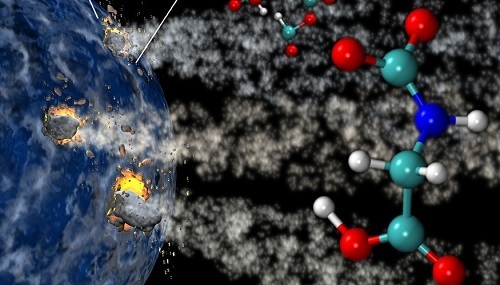
Image: Comets contain compounds such as water, ammonia, methanol and carbon dioxide that could have supplied the raw materials that, upon impact with the early Earth, would have yielded an abundant supply of energy to produce amino acids and jump-start life. Credit: Lawrence Livermore National Laboratory.
The same building blocks can be produced by the impact of a rocky meteorite into an object with an icy surface, making the icy moons of outer gas giants an interesting environment for astrobiology. Mark Price (Imperial College London) notes how much still needs to be understood:
“This process demonstrates a very simple mechanism whereby we can go from a mix of simple molecules, such as water and carbon-dioxide ice, to a more complicated molecule, such as an amino acid. This is the first step towards life. The next step is to work out how to go from an amino acid to even more complex molecules such as proteins.”
For more, see this Imperial College news release and this release from Lawrence Livermore National Laboratory. The paper is Martins et al., “Shock synthesis of amino acids from impacting cometary and icy planet surface analogues,” published online in Nature Geoscience 15 September 2013 (abstract).






September 16, 2013
August 25, 2012: Interstellar at Last
Tracking Voyager 1 outbound for the past decade has been at times anti-climactic. Had the spacecraft reached interstellar space or hadn’t it, and how exactly would we know? The announcement last week that the milestone has been reached will forever mark August 25, 2012 as the date when a human-built object, still returning data, made the crossing. That it took a year of analysis only reminds us how much we have to learn about even this closest region of the space between the stars, where some interactions with the Sun continue.
“We have been cautious because we’re dealing with one of the most important milestones in the history of exploration,” said Voyager project scientist Ed Stone of the California Institute of Technology in Pasadena. “Only now do we have the data — and the analysis — we needed.”
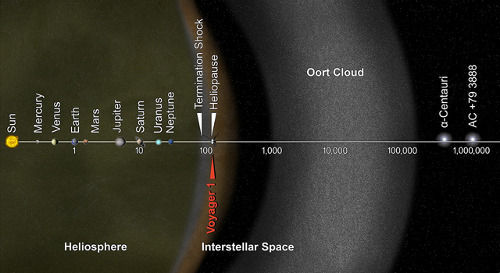
Image: I use this image — or one much like it — all the time in my talks because it puts huge Solar System distances in perspective. The scale bar is measured in astronomical units (AU), with each set distance beyond 1 AU representing 10 times the previous distance. Each AU is equal to the distance from the Sun to the Earth. It took from 1977 to 2013 for Voyager 1 to reach the edge of interstellar space. Credit: NASA/JPL-Caltech
The caution has certainly been justified. Voyager 1’s plasma spectrometer — able to measure the ionized gas, or plasma, that essentially inflates the heliosphere — stopped working all the way back in 1980. The direction of magnetic field lines emanating from the Sun became became the alternative marker, since solar plasma and interstellar plasma were expected to differ in direction. Another marker: The level of charged particles inside the heliosphere should drop and the level of galactic cosmic rays should rise when the heliosphere was truly crossed.
Last summer brought changes beginning in May and accelerating in July with a jump in the number of outside particles and a drop in the charged particles from the Sun. Confusingly, the magnetic field direction had not changed — was the spacecraft still inside the heliosphere? A solar storm early in 2012 may have furnished the answer. Leading the plasma wave science team, Don Gurnett and Bill Kurth (University of Iowa) realized that radio activity observed earlier in the mission had been the result of interstellar plasma encountering bursts of solar material.
The oscillations caused by such events should be observable when Voyager 1 is surrounded by interstellar plasma, and plasma oscillations in the spring of this year had the signature of that plasma, evidently the outflow from the March, 2012 solar flare activity. The scientists made the call based on the observed electron density of the plasma, which is higher in the interstellar medium. Working back through the data, the duo could pin the onset of these interactions to August of 2012, consistent with the earlier changes in charged particles and doubtless related to the burst of solar activity that set the plasma in motion. While amidst interstellar plasma, the spacecraft was still feeling some influence from the Sun. Let me quote Stone again on this:
“Now that we had actual measurements of the plasma environment – by way of an unexpected outburst from the sun – we had to reconsider why there was still solar influence on the magnetic field and plasma in interstellar space. The path to interstellar space has been a lot more complicated than we imagined.”
NASA is now saying that by August 25 the spacecraft had entered the interstellar region for good, an indication that the heliopause had been crossed. The Voyager team is in agreement that the spacecraft is in interstellar space, although Stone refers to it as “a mixed, transitional region,” and we still see some solar influence, possibly including the unchanged direction of the magnetic field, which is puzzling. Voyager 1 seems to be illustrating what we have been learning for the past sixty years, that the Solar System and its surroundings are much more varied and diffuse than we previously thought. We once conceived of our system as a place of nine planets and a belt of rocky debris. Now we know about numerous small worlds in the Kuiper Belt, a second band of rock and icy objects, and have re-tooled the very definition of the word ‘planet.’ We’ve also learned we’re surrounded by trillions of comets.
That latter point deserves some attention, for the numerous headlines talking about Voyager 1’s departure from the Solar System reflect a continuing misunderstanding about what the system actually is. The Oort Cloud is widely accepted as the home of long-period comets, occasionally jolted by gravitational interactions into sending a new comet into a Sun-grazing orbit. To leave the Solar System, we have to speak of going to a place where the Sun’s gravity no longer dominates, and that could take us out 100,000 AU or more. Voyager 1’s passage through the Oort Cloud will be measured in tens of thousands of years. In 40,000 years, Voyager 1 will be closer to the star AC +79 3888 than to our own Sun.
One of those headlines mistakenly saying that Voyager 1 had left the Solar System occurred in the Washington Post, but the article nonetheless contained this gem:
Launched in 1977, the Voyager’s computing power was impressive for its time. The spacecraft was designed to run most of its operations itself, since the billions of miles separating it and Earth make communication laggy. To accomplish that, Voyager has three interconnected computer systems: one to control the craft’s flight and altitude, another to control its instruments, and a third to manage the first two. The computers can process about 8,000 instructions per second — a fraction of the capability of your smartphone, which handles upwards of 14 billion each second. With memory measured in kilobytes, they can hold only hold a few thousand words worth of text.
We haven’t left the Solar System, but at 121 AU we’ve punched through the heliopause and are in a region where our spacecraft is surrounded by material from other stars rather than being dominated by plasma from the Sun. The achievement is colossal: We launched the Voyagers in 1977 on a mission designed to study specific planetary targets, with no expectations that they could be pushed to become our first interstellar probes. Their data are stored on 8-track digital tape recorders and broadcast back to Earth with a 23-watt signal. That Voyager 1 has now managed the journey speaks to the quality of its construction and the dedication of the teams that have monitored it over the decades. What more will it tell us before it falls finally silent?
The paper is Gurnett, Kurth et al., “In Situ Observations of Interstellar Plasma With Voyager 1,” published online in Science 12 September 2013 (abstract).
Addendum: This just in from Jim Benford, who has been calculating when Voyager 2 and New Horizons will cross into interstellar space:
New Horizons is going the same direction as Voyager 2, as projected onto the ecliptic, but Voyager 2 is going south of the plane, New Horizons staying approx in the plane. It’s headed toward Sagittarius.
If the ISM is the same distance as Voyager 1 found it (122 AU), New Horizons will take 30 years to reach it. [New Horizons is going 3.165 AU/yr, is 27.35 AU out].
Similarly, if the ISM is the same distance as Voyager 1 found it, Voyager 2 will reach the ISM in 4.9 years.






September 13, 2013
Riding on Comets’ Coat-tails
Voyager 1 is now an interstellar spacecraft, according to the latest reports (and I’ll have thoughts on Voyager, its progress and its implications, on Monday). For today, though, Keith Cooper is envisioning other ways of going interstellar, methods that take advantage of natural objects like comets. Can we harness their resources and change the paradigm of deep space flight? Keith has written often for Centauri Dreams despite a busy schedule as editor of the British monthly Astronomy Now and equivalent duties at Principium, the newsletter of the Institute for Interstellar Studies. This look at how we might expand into the Oort Cloud and beyond takes us into a future in which our species may well differentiate as we explore different ways of reaching the stars.
by Keith Cooper
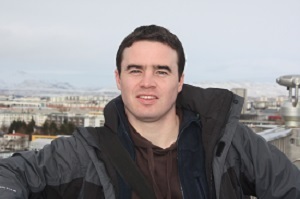
Amidst the clamor for giant metal-hulled ships, fusion engines and warp drive, our interstellar pioneers may be missing a trick. Why go to all the trouble of building a starship when there are trillions of natural ones right on our doorstep?
After I reviewed W. Patrick McCray’s book The Visioneers in my last column I picked up some old copies of Omni magazine from eBay on the strength of the magazine’s portrayal in the book. Flicking through the June 1984 issue I stumbled upon an article about using comets ejected from our Solar System as vessels to transport us through interstellar space. This instantly took me back to a few months earlier and a conversation with space artist Jon Lomberg, who mentioned artwork he did for Carl Sagan of ‘treeships’ – living, hollow trees grown out of comets, riffing on an original premise by physicist Freeman Dyson.
Comet ships are an old idea that does not seem to have received much airtime recently, but with all eyes on Comet ISON this winter it is the perfect opportunity to revisit this novel notion. ISON itself is a five-kilometre wide chunk of ice, rock and dirt that is racing towards the Sun. It hit headlines last year with claims that it could, for a short time, outshine the full Moon, but expectations have been significantly downgraded since then. Nevertheless, there is still hope that it will grow as bright as Venus near perihelion on 28 November – assuming it isn’t vaporised in the heat of the Sun as it flies within 1.8 million kilometres of our star.
If it survives its solar encounter, the comet will be flung back into the Oort Cloud – the distant realm of the comets – and it may even be ejected from the Solar System entirely on a parabolic trajectory. That’s a remarkable thought: the comet would enter interstellar space, to wander lonely between the stars and to maybe, one day, be picked up by another star. The comet highway could work both ways – the short period comet 96P/Maccholz is suspected by some scientists to have originated from another star system, based on what appears to be a carbon depletion seen in the abundance of molecules like cyanogen compared to other comets in our Solar System (although it should be stated that there are also more mundane explanations for 96P’s weird chemistry). Computer simulations of the formation and evolution of the Oort Cloud indicate that up to a hundred times more comets are ejected into interstellar space than remain in the Sun’s grasp. The Solar System is literally shedding comets in their billions.
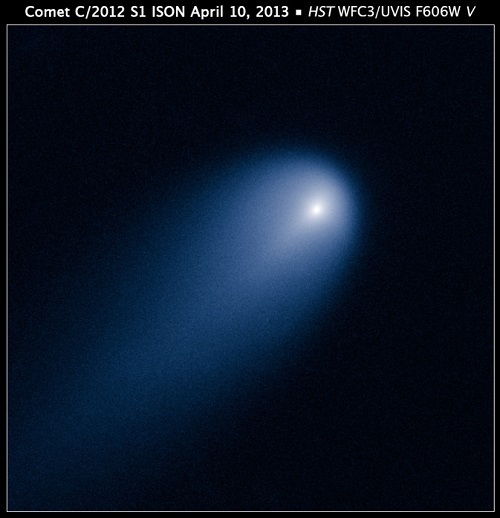
Image: Hubble’s view of Comet ISON (C/2012 S1) on April 10, 2013. This image was taken in visible light. The blue false color was added to bring out details in the comet structure. Credit:NASA, ESA, J.-Y. Li (Planetary Science Institute), and the Hubble Comet ISON Imaging Science Team.
Cometary Trajectories Outward
No astronomer has ever observed the Oort Cloud directly – it is too distant, its inhabitants too small and too faint – but we know the cloud must exist there as the orbits of long-period comets indicate they originate in all directions from a region that exists between as close as 2,000 and as far away as 50,000 astronomical units. Models suggest that the Oort Cloud comes in two parts – an inner doughnut shaped region and an outer spherical halo, together containing more than a trillion icy bodies. It is from the loosely bound outer cloud that the long-period comets like ISON hail – and which interstellar comets must also originate.
We could take advantage of these escaping comets, eschewing the need to scratch-build complete starships and loading millennia’s worth of supplies onto them when we can just hitch a ride on a comet. After all, comets come ready-made, endowed with resources and volatiles: plenty of water, metal ores, even large stocks of deuterium to help fire a fusion reactor. One downside is that we might not have too much say about where the comet is heading, but given that the Solar System will eject comets randomly in all directions, hopping aboard them may pave the way for the full blown diaspora of humanity into the Milky Way at large.
Catching a comet when it is near the Sun might not be the best option. As a comet receives greater solar energy it warms, developing the familiar fuzz of the coma and a trailing tail as ice on its surface sublimates into vapour. More violently, gases trapped within pockets inside the comet’s porous structure begin to expand, often bursting out explosively. The comet would be unstable, even out beyond the orbit of Mars, as 2008’s outburst from Comet 17P/Holmes proved. Instead the best time to latch onto a comet could be when it is receding back into the outer Solar System and things have settled back down on its surface.
There’s an added problem. Human activity on a comet could kick the activity off again, so actually building habitats on or inside comets is not going to work. Consequently, the best tactic might be to live in habitats that are tethered to and which siphon materials from a comet. It is not yet clear how we could mine a comet safely, but the comet’s deuterium, locked in its water-ice, will be essential to the interstellar travellers if they want to survive their journey.
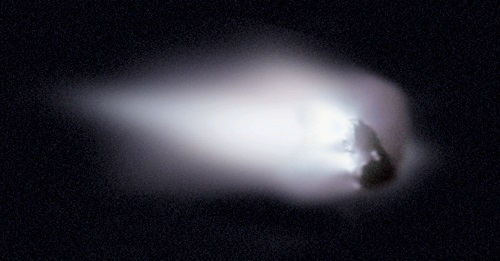
Image: Comet Halley, as seen in 1986 by the European spacecraft Giotto. Data from Giotto’s camera were used to generate this enhanced image of the potato shaped nucleus that measures roughly 15 kilometers across. Some surface features on the dark nucleus are on the right, while gas and dust flowing into Halley’s coma are on the left. Credit & Copyright: Halley Multicolor Camera Team, Giotto Project, ESA.
Energy can be derived from nuclear fusion using deuterium. It is particularly abundant in comets – Comet Hale-Bopp, which graced our skies in 1997, was shown to contain an abundance of deuterium twice that of Earth’s oceans, at a ratio of 1:6,410 compared to regular hydrogen. This is three times as much as astrophysicist Eric Jones predicted when writing on the subject in 1985’s Interstellar Migration and the Human Experience, where he speculated that one deuterium atom for every 20,000 hydrogen atoms in a comet should be sufficient to power fusion to sustain a significant population of interstellar voyagers for many centuries. We see this scenario being played out in [be warned, spoilers] Greg Bear’s novel Hull Zero Three, where three cylinders are affixed on stanchions to a central comet from which resources are being drawn. Alas, interstellar travel times for comets are measured in millennia, not centuries, so an additional power source will also be required.
Deep into interstellar space the singular power of the Sun fades into insignificance. However, despite being at great distance the collective starlight of all the stars could, says Jones, produce several hundred megawatts of power. Huge parabolic mirrors built out of aluminium mined from a comet could be constructed to capture and focus diffuse starlight. Inspired by Robert Forward’s book The Flight of the Dragonfly, in which the main spacecraft used similar mirrors to capture and focus the laser light that is beamed towards it from the Solar System and which is driving it forward to Barnard’s Star, Jones suggests that, at around 1.6 light years from the Sun, the mirrors would require a diameter of 3,000 kilometres. Cluster a bunch of comets together, says Jones, and the inhabitants could tend to a farm of mirrors 30,000 kilometres across. Combined with fusion reactors, these mirrors should be able to supply power to the comet cluster’s inhabitants for as long as the community exists.
Biotechnology and the Interstellar Diaspora
Nevertheless, it all sounds like a terribly hard way to live, a subsistence existence. Small communities in tiny tin cans eking out their lives surviving off a trickle of energy derived from raw starlight and a few centuries worth of fusion power, light years from any planetary system. It is difficult to think of a reason why anybody would want to travel to the stars this way. Jones suggests that bands of nomads, clans and tribes residing in the Oort Cloud in the future would be most likely to embark on such a lonely journey, mirroring the voyage into the unknown Pacific made by the Polynesian explorers a thousand years ago. It is a thought that Freeman Dyson concurs with, a thought that he voiced at his talk at the recent Starship Century symposium in May this year. For Dyson, in a few centuries there could well be more people living in the Oort Cloud than are living on Earth. If this is to be the shape of the future diaspora it couldn’t be further from the organised, planned launch of gun-metal grey starships with hand-picked crews that we envisage today.
Before dismissing cometary travel as a venture only for a rabble of humans, Dyson perhaps has a better idea, one that raises itself above the mundane toil of living off a comet in the conventional way, to arrive at a level of magnificent eloquence and beauty.
During his Starship Century speech, Dyson revisited an old idea of his dating back to 1972. He postulated with a degree of confidence that biotechnology will come to dominate the future, inevitably instigating a number sociological changes in humanity, some that we might predict, others that we cannot. One possibility that Dyson does predict is the existence of ‘big trees’ – genetically modified plants designed to survive in space that would grow to enormous sizes, many kilometres across, with their roots ensconced within a nutrient-rich comet. The tree would be so huge that it would contain hollow, airtight spaces where people could live. Furthermore, the plants could grow their own greenhouses, “just as turtles grow shells and polar bears grow fur and polyps build coral reefs in tropical seas,” according to Dyson. They would produce their own oxygen supply from photosynthesis, like any other plant, while an array of lenses and mirrors could focus light from the distant Sun and stars into the greenhouse. It is an idea that has had a little play in science fiction, such as in Dan Simmons’ novels like Hyperion:
“The Consul remembered his first glimpse of the kilometre-long treeship as he closed for rendezvous… it’s leafy bulk clearly ablaze with thousands of lights which shone softly through leaves and thin-walled environment pods, or along countless platforms, bridges, command decks stairways and bowers. Around the base of the treeship, engineering and cargo spheres clustered like oversized galls while blue and violet drive streamers trailed behind like ten-kilometre roots.”
Image: This painting by Jon Lomberg was commissioned for the book Comet by Carl Sagan and Ann Druyan, to illustrate a concept proposed by physicist Freeman Dyson. Dyson suggested that in the future, comets could be used as the source of minerals and water to support the growth of gigantic, genetically engineered trees. These trees would use sunlight to grow to large size, and provide a habitat for space colonists. Credit: Jon Lomberg.
Biotechnology could play a significant role in adapting life for the harsh conditions on the rim of the Solar System. Rather than toiling away on comets, Oort Cloud denizens could use biotechnology to adapt to be more efficient with limited resources and create a balanced ecosphere in their habitats. While we are currently busy tinkering with our paper designs for starship drives and metal spaceships, are we blind to the oncoming biotechnological revolution and could it be this that leads us to the stars rather than fusion engines, antimatter or warp drive?
Perhaps, but there would be a downside. Sticking engines on a comet or a ‘treeship’ as in Simmons’ novel is probably impractical if we are limiting ourselves to the resources available only on the comet or via captured in starlight. Instead, riding on a comet will mean taking the slow road to the stars. We shouldn’t expect to get anywhere on them for tens or even hundreds of thousands of years. By necessity they would become generation ships, at their greatest a fleet of mobile O’Neill colonies, or a literal floating forest spurring the “greening of the Galaxy” where starships are grown, not built.
If we are to pursue the faster route, constructing engines of enormous power settled into vast metal hulks, then perhaps the the comet travellers play a different role. Maybe they will never reach the stars, but instead settle into the dark spaces between, way-stations for lost or weary travellers who have followed later in their faster metal starships. Two different populations moving out into the Galaxy and occasionally meeting, each pursuing distinctly different technologies, each growing and changing in their own different ways, one driven by the green efficiencies of biotech, the other by the gleam of a metal hull and the hum of a starship engine. If you could choose, which would you be?






Paul Gilster's Blog
- Paul Gilster's profile
- 7 followers


